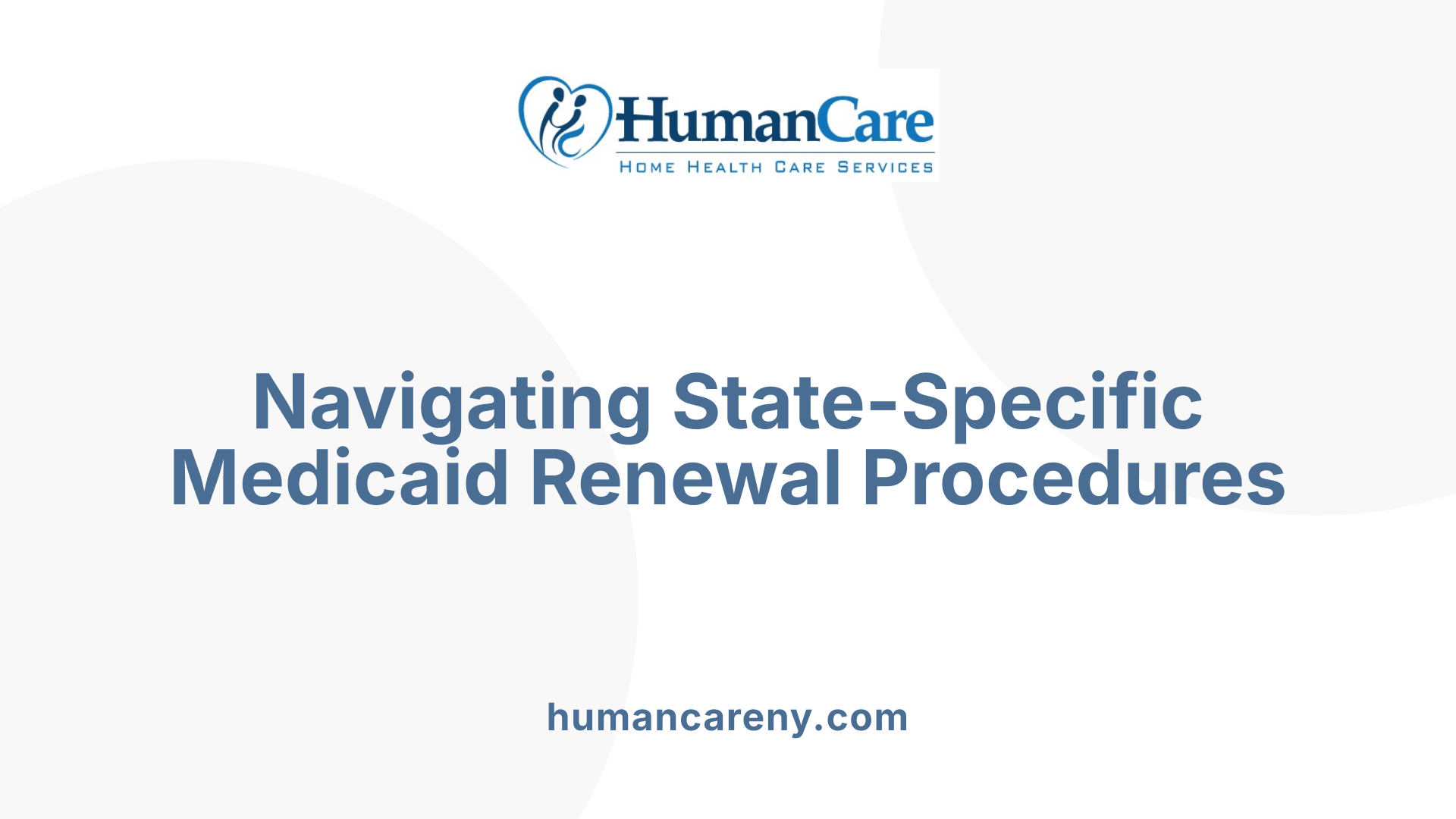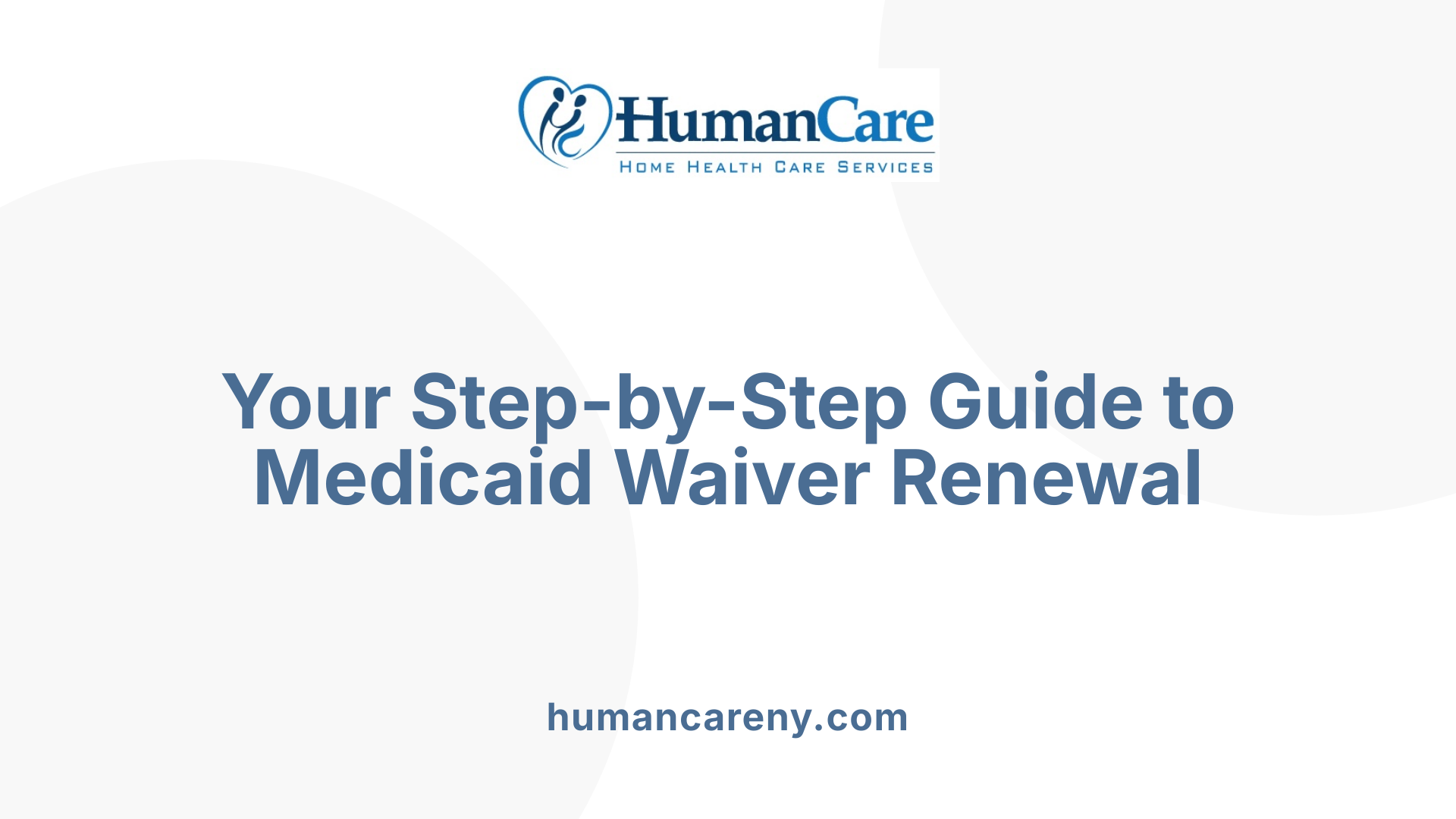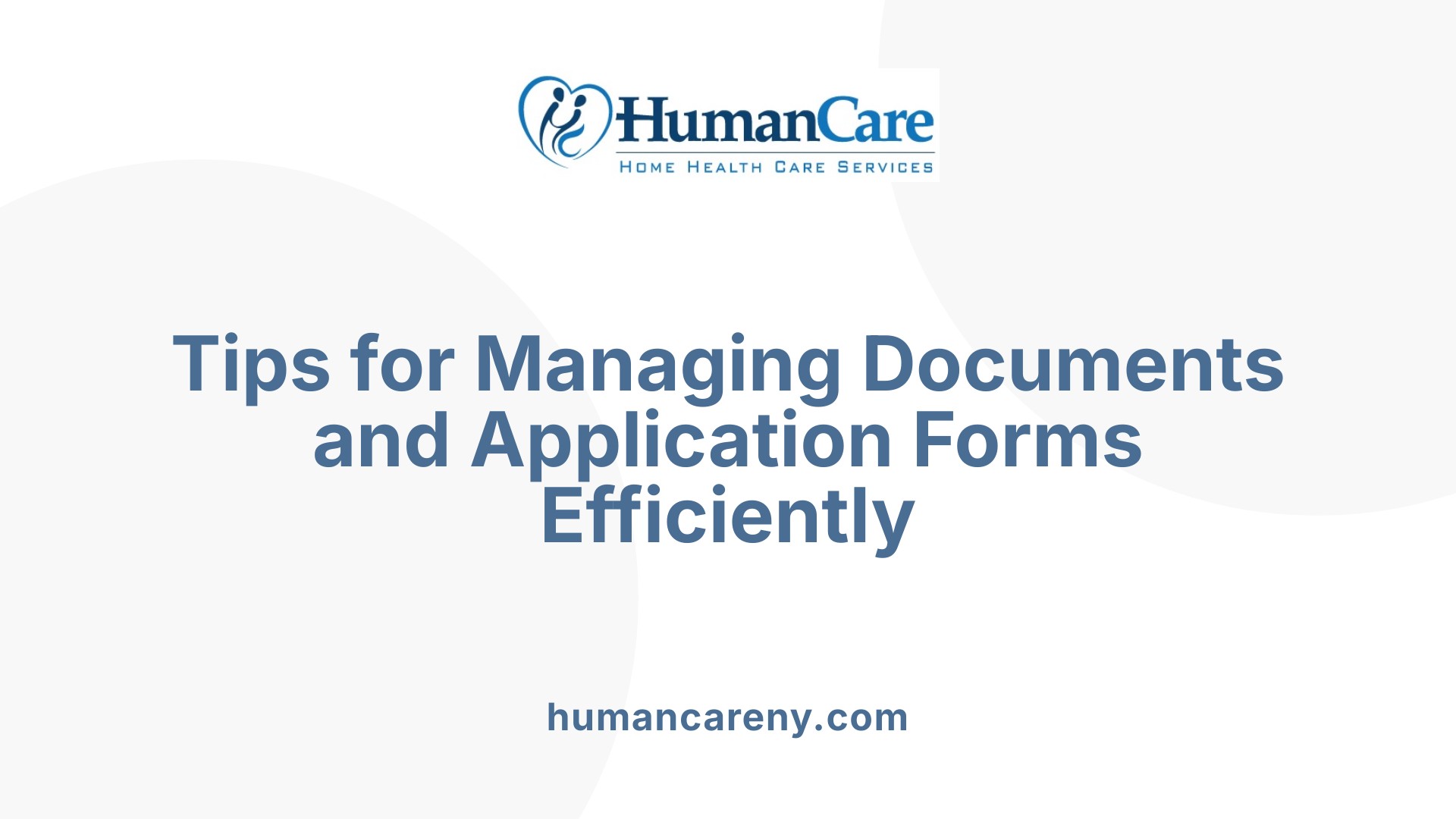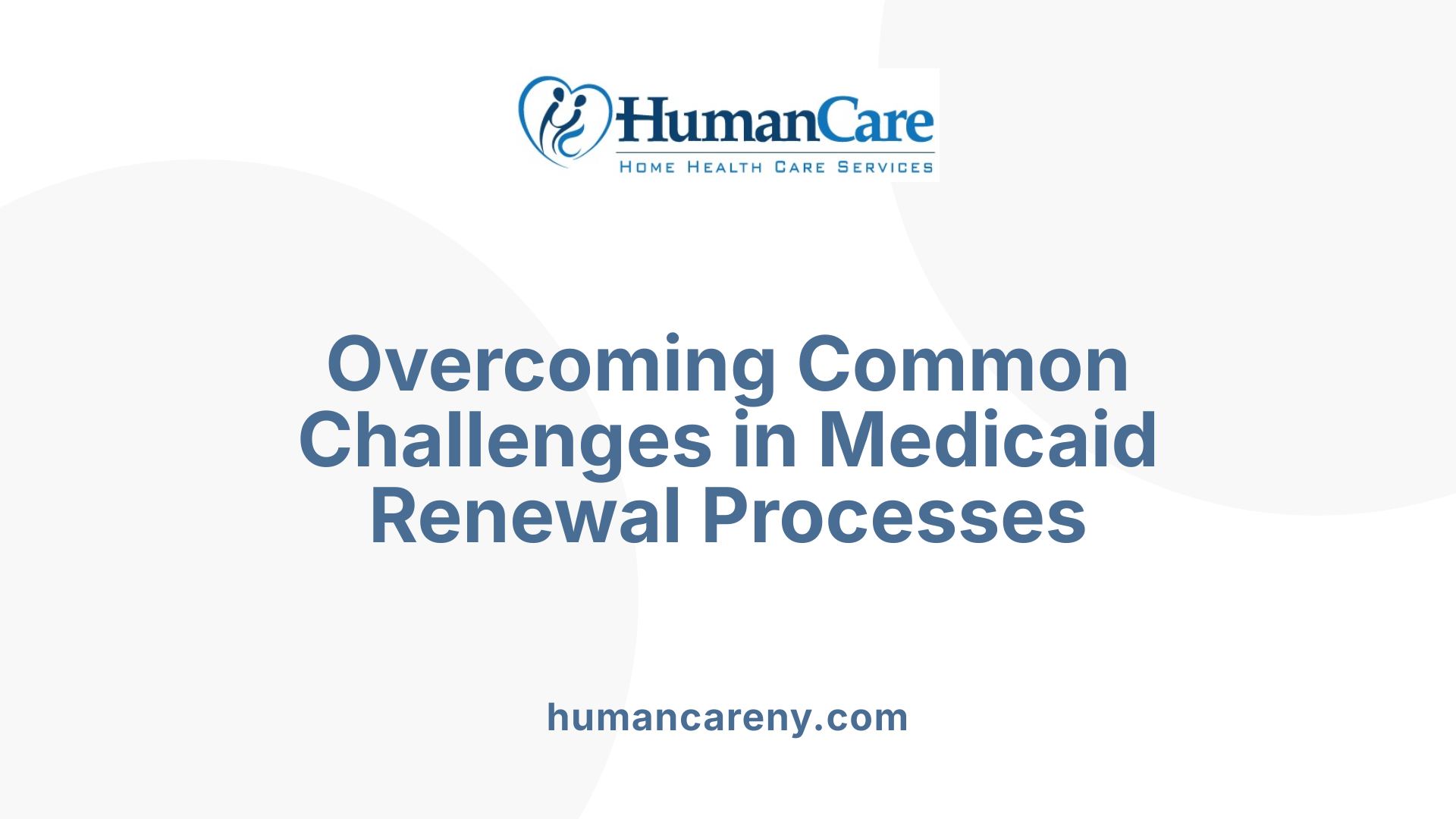Navigating the Medicaid Waiver Renewal Process: A Guide for Families
Renewing Medicaid waivers is a critical step in maintaining access to essential services for individuals with disabilities and seniors. Given the complexity and state-specific procedures, families must stay informed and organized to ensure a seamless renewal process. This guide provides comprehensive tips, step-by-step procedures, and resources to help families effectively manage Medicaid waiver renewals, minimize challenges, and secure ongoing coverage.
Understanding Medicaid Waiver Renewals and Eligibility Criteria

What are the general renewal requirements and eligibility criteria for Medicaid waivers?
Renewal requirements for Medicaid waivers are designed to verify that beneficiaries still meet the necessary conditions to continue receiving services. This process typically involves submitting updated information about personal income, assets, and health conditions. For instance, beneficiaries may need to provide proof like benefit award letters, bank statements, tax documents, or medical reports.
Eligibility criteria often focus on the individual's need for long-term services, disability status, or specific medical conditions as determined by federal and state guidelines. Each state administers its waivers with specific rules, which may include the level of care needed or the duration of disability. Throughout the renewal cycle, some programs incorporate public input or stakeholder feedback to improve service delivery.
Ensuring ongoing compliance involves timely submission of required documents and maintaining adherence to program standards. Failure to renew on time can lead to benefits loss, but many states offer a grace period or reinstatement options if beneficiaries act promptly.
How does the Medicaid renewal process differ across various states?
State-specific differences significantly influence how Medicaid renewals are conducted. Some states have automated or pre-populated renewal processes, reducing paperwork for beneficiaries. Others require manual completion of renewal forms, either online, by mail, or in person.
For example, California uses an automatic renewal system that minimizes the need for beneficiaries to re-submit documentation, whereas other states may rely on in-person interviews or mailed questionnaires. The frequency of renewals can also vary—some states require annual reviews, while others might do it more or less often.
Accessibility and procedures depend on state infrastructure; many states now provide online portals and dedicated customer service support. Beneficiaries should check with their local Medicaid office or official website to understand specific procedures and requirements.
What are the best practices for maintaining continuous Medicaid waiver benefits?
To avoid lapses in coverage, families and individuals should adhere to several best practices:
- Respond promptly to renewal notices and deadlines.
- Keep contact information current to ensure notifications are received.
- Collect and organize necessary documents early, such as income verification, medical records, and asset statements.
- Utilize automated renewal options if available.
- Engage with case managers, benefits counselors, or trusted advocates who can assist with the renewal process.
- Regularly review eligibility criteria and program updates, especially during changes in health status or financial circumstances.
- Stay informed about policy shifts, public health emergencies, or legislative changes that may impact renewals.
Following these steps can help beneficiaries maintain continuous access to vital services and avoid unnecessary disruptions.
| Aspect | Description | Additional Notes |
|---|---|---|
| Renewal frequency | Usually annual but varies | Check with state Medicaid office |
| Required documentation | Income, resources, medical needs | Specific documents depend on state and waiver |
| Renewal method | Online, mail, in person | Use automated systems when available |
| Common challenges | Delays, incomplete info | Stay organized and responsive |
| Support options | Case managers, counselors | Utilize available help resources |
| Consequences of lapses | Loss of benefits, reinstatement | Act quickly post-deadline |
Remaining vigilant with these practices ensures continuous access to Medicaid waivers and the support they provide.
Step-by-Step Guidance for The Renewal Process

What is the step-by-step process for renewing a Medicaid waiver?
Renewing a Medicaid waiver involves several important steps to ensure continued access to long-term services and supports. Typically, recipients will first receive renewal notices from the Medicaid agency well before their current benefits expire. These notices can be sent via mail or electronically, depending on the state’s system.
Next, it’s essential to gather all required documentation. This often includes proof of income, such as benefit award letters or tax returns, along with medical records and current care plans if applicable.
Once all documentation is collected, beneficiaries should complete the renewal application. This can usually be done online through a state portal, via paper forms, or through an in-person appointment. Providing accurate and updated information is crucial.
After submitting the application, beneficiaries should keep copies of everything for their records. They should also monitor the status of their renewal—either through the online portal or by contacting case managers. Responding promptly to any additional information requests from the agency helps prevent delays.
The final step is to await approval. Once approved, it’s important to confirm the continued eligibility and review the service plan to ensure all needs are met. Regular follow-up can prevent gaps in services and benefits.
Will my Medicaid automatically renew, or do I need to reapply each year?
Automatic renewal of Medicaid depends on the state and specific program requirements. Some states have adopted systems where eligibility is verified electronically using data from federal and state sources. These automatic or pre-populated renewals reduce the administrative burden on beneficiaries.
However, particularly for Medicaid waivers, many recipients are still required to complete and submit renewal forms annually or every few years. It’s essential to verify eligibility status and renewal procedures specific to your state.
To maintain continuous coverage, beneficiaries should keep their contact information updated and respond promptly to renewal notices. Failing to act may result in the loss of benefits, but benefits can often be reinstated within 90 days if all required information is submitted.
Checking with your state’s Medicaid agency or reviewing online resources can clarify whether your renewal process is automatic or requires action on your part.
Monitoring the renewal status and follow-up
Monitoring the status of your Medicaid renewal application is an important step. Use the state’s online portal if available, or contact your case manager or local Medicaid office.
Stay vigilant for any requests for additional documentation or clarification, and respond quickly to avoid delays.
Keep copies of all submitted forms and correspondence related to your renewal. If your renewal is delayed or denied, ask about options for appeals or temporary coverage.
Regular follow-up ensures that your Medicaid coverage continues without interruption and that all necessary actions are completed on time.
| Step | Action | Details |
|---|---|---|
| Initiate renewal | Receive renewal notice | Notice sent via mail or electronically |
| Gather documents | Collect proof of income, medical records | Necessary for re-evaluation |
| Complete application | Fill out renewal forms | Online, paper, or in person |
| Submit and monitor | Submit forms, check status | Use online portals or contact case managers |
| Respond to requests | Provide additional info if needed | Ensures timely processing |
| Confirm renewal | Final approval and service review | Verify continued eligibility |
Using this organized approach will help ensure that your Medicaid waiver renewal goes smoothly, maintaining your access to vital services.
Managing Documentation and Application Forms Effectively

How should I manage documentation and application forms for Medicaid waiver renewal?
Successfully renewing Medicaid waivers, such as Family Care or HCB waivers, requires careful management of documentation and forms. Begin by collecting all necessary records well before the renewal date. Essential documents include proof of income like benefit award letters, tax returns, pension statements, and bank account details. Medical records that demonstrate the ongoing need for services are also important.
Next, organize these documents efficiently. Keep both physical copies in a secure folder and digital copies on a computer or cloud storage for easy access. Tracking submission deadlines is crucial; consider using reminders or calendars to stay ahead.
State-specific instructions vary, so review the renewal forms to understand whether they must be completed online, mailed, or submitted in person. Some renewals may also require additional evaluations, such as functional assessments or care need updates.
Regularly communicate with your case manager or local Medicaid office for updates and guidance. This proactive approach can prevent delays and help you complete all requirements accurately.
What resources and educational materials are available to assist families with Medicaid waiver renewal?
Families and caregivers are supported by a variety of resources designed to make the renewal process smoother. The official Medicaid website in each state offers detailed guides, fact sheets, FAQs, and step-by-step videos explaining how to renew benefits and what documentation is needed.
Many state agencies conduct outreach events, webinars, and provide helplines staffed with knowledgeable personnel who can answer specific questions. Public benefits counselors and community organizations are also valuable for assistance in preparing paperwork and understanding eligibility criteria.
Federal resources from CMS include useful tools such as renewal checklists, sample forms, and informational tip sheets for both families and providers. These materials help clarify what is required and how to approach the renewal process.
Beneficiaries should also subscribe to newsletters or follow community stakeholder networks that regularly share updates on policy changes, deadlines, and new resources.
Additional Tips for Managing Medicaid Waiver Renewal Documents
| Tip | Description | Benefit |
|---|---|---|
| Start early | Gather documents well in advance of renewal deadlines. | Avoid last-minute stress and missing deadlines. |
| Keep organized | Use labeled folders (physical and digital) for easy access. | Saves time and prevents loss of important papers. |
| Stay informed | Regularly check state Medicaid updates and communications. | Ensures compliance with new or changing requirements. |
| Communicate proactively | Maintain contact with case managers and Medicaid offices. | Clarifies doubts and gets update alerts. |
| Use available resources | Utilize online guides, webinars, and outreach programs. | Simplifies the renewal process. |
Effectively managing your renewal documentation can make the process less stressful and more efficient. Staying organized, informed, and proactive ensures continuous access to essential Medicaid services.
Addressing Challenges During Medicaid Waiver Renewals

What are common challenges faced during Medicaid waiver renewal and how can they be addressed?
Renewing Medicaid waivers such as Wisconsin’s Family Care and Family Care Partnership involves several hurdles that can complicate maintaining continuous coverage. One frequent issue is delays stemming from manual processing and administrative backlog. Missing or incomplete documentation from beneficiaries often causes interruptions, as agencies require updated income statements, proof of residence, or medical records.
Another challenge is communication malfunction between Medicaid agencies and beneficiaries. Confusing notices, language barriers, or outdated contact information can prevent timely response.
To address these issues, families should respond promptly to renewal notices and ensure all contact details are current. Gathering necessary documentation early—such as income verification, health records, and service histories—prevents last-minute scrambling. Using online portals provided by Medicaid can streamline submissions and reduce delays.
Another effective strategy is working with case managers, advocates, or authorized representatives who can assist in gathering paperwork and communicating with agencies. Regularly checking renewal status online or via direct contact ensures awareness of any pending actions. Being proactive by seeking clarification or assistance as soon as any issues arise minimizes risk of coverage gaps.
What strategies can help navigate the Medicaid waiver re-authorization process?
Successfully navigating the re-authorization process requires thorough preparation and active engagement. Maintaining an organized record of previous evaluations, service plans, and outcomes supports a strong renewal application.
It is crucial to stay informed about updates in state or federal policies that might impact renewal procedures. Participating in stakeholder consultations or listening sessions allows beneficiaries and advocates to voice concerns and receive timely information.
Adhering to all application deadlines and submitting complete documentation demonstrates commitment and readiness, reducing processing delays. Developing a data-driven proposal that illustrates the program’s effectiveness, cost-efficiency, and positive impact can influence decision-makers.
Early engagement with federal officials and continuous reporting of program results reinforce the program's value and support its renewal. Collaborating with community organizations and collecting feedback from families and caregivers helps generate community support and strengthen the case for continued funding.
How can beneficiaries prevent coverage gaps during renewal?
Proactive steps are essential to prevent lapses in Medicaid or waiver services. Beneficiaries should actively monitor renewal notices and ensure their contact information remains current with the agency.
Gathering all necessary documentation early, such as income proofs, resource statements, and medical documentation, helps ensure readiness for renewal submissions.
Utilizing online portals, or appointing representatives, can expedite the process and improve communication. Upcoming renewal deadlines should be marked on calendars, with reminders set to avoid missing submission windows.
In cases where renewal is delayed or denied, beneficiaries can request expedited reviews or seek assistance from public benefits counselors. If necessary, they can also appeal denials or seek Medicaid fair hearings to address disputes.
By remaining involved and informed, families can ensure uninterrupted access to vital services and support their loved ones living independently or with disabilities.
| Aspect | Strategy | Details |
|---|---|---|
| Documentation | Gather early | Collect income, resource, and medical documents beforehand |
| Communication | Keep details updated | Confirm current contact information regularly |
| Use resources | Online portals and advocates | Leverage digital tools and professional support |
| Stakeholder engagement | Stay informed | Participate in meetings, review policy updates |
| Timeliness | Follow deadlines | Submit all required materials on time |
| Monitoring | Check status | Regularly verify renewal progress online |
| Dispute resolution | Seek assistance | Use fair hearings or appeals if issues arise |
Leveraging Resources and Outreach to Support Renewals
What resources and educational materials are available to assist families with Medicaid waiver renewal?
Families navigating Medicaid waiver renewals have access to extensive resources designed to simplify the process and ensure continuous coverage. Official Medicaid agency websites serve as central hubs, offering detailed guides, fact sheets, webinars, and FAQs tailored to specific waiver programs like Family Care or the Missouri Children with Developmental Disabilities Waiver. These digital resources provide step-by-step instructions on renewal procedures, eligibility criteria, and required documentation.
In addition to online materials, many states organize outreach events such as fairs, informational sessions, and training workshops. These are often hosted by community health departments or advocacy organizations and allow families to receive personalized assistance.
Hotlines operated by state Medicaid offices or program administrators are critical support channels, where families can speak directly with knowledgeable staff for clarifications or help with paperwork. Federal agencies like the Centers for Medicare & Medicaid Services (CMS) publish toolkits, checklists, and guidelines to foster better understanding of renewal mandates.
Community-based organizations and local health clinics frequently coordinate educational sessions to promote awareness about upcoming renewal deadlines and necessary preparations. These organizations also help families gather and organize documents like income statements, tax forms, and bank records.
Furthermore, newsletters, email updates, and online resource hubs disseminate timely information about policy updates, new services, and procedural changes. Together, these varied resources ensure families are well-supported and informed at every stage of the renewal process.
What are best practices for maintaining continuous Medicaid waiver benefits?
Continuity in Medicaid benefits depends heavily on proactive planning and organized management of renewal procedures. The foremost best practice is to respond promptly to renewal notices once received, avoiding delays that could result in loss of coverage.
Maintaining current contact information with the Medicaid agency is crucial. Changes in address, phone number, or email should be reported immediately to prevent missed notifications.
Preparing necessary paperwork ahead of deadlines can significantly reduce last-minute stress. Families should gather proof of income, such as pay stubs, tax forms, or disability benefits letters, as well as documents verifying resources like bank statements, stocks, or property holdings.
Using online portals provided by Medicaid agencies allows for more efficient application submissions and updates. Whenever possible, designating a trusted individual or case manager as an authorized representative can facilitate communication and documentation handling.
Engaging regularly with case managers or social workers helps families stay informed about eligibility criteria, policy changes, and upcoming deadlines. Participating in community outreach events and workshops further enhances understanding and readiness.
Implementing continuous monitoring of eligibility status—such as annual check-ins or setting reminders—prevents lapses. Maintaining organized records and keeping copies of all submitted documents ensures that process-related information is always accessible.
Finally, building a network of community advocates or support groups provides additional reassurance. These groups often offer tips, emotional support, and practical help, especially during health crises or policy shifts.
How can community and stakeholder engagement enhance renewal support?
Active engagement by community organizations, healthcare providers, and stakeholder groups is fundamental to a successful renewal process. These entities serve as trusted sources of information and can help reach vulnerable populations that might otherwise miss renewal deadlines.
Community organizations often host outreach sessions, distribute educational materials, and conduct door-to-door campaigns to raise awareness about Medicaid renewal requirements and deadlines. They tailor messaging to cultural and linguistic needs, ensuring accessible communication.
Stakeholders like healthcare providers can integrate renewal reminders into routine patient interactions and assist with documentation and appointment scheduling. Collaborations between health departments and local agencies create a broad network of support, enhancing the reach of educational efforts.
Public health campaigns and local advocacy groups can also advocate for policy adjustments that simplify renewal procedures, such as automatic renewals or pre-populated forms. These efforts minimize administrative burden and make it easier for beneficiaries to maintain coverage.
In sum, leveraging community partnerships enhances outreach effectiveness, ensures diverse populations are informed, and promotes equitable access to Medicaid benefits during renewal periods.
| Resource Type | Key Features | Additional Support Opportunities |
|---|---|---|
| Official Medicaid Websites | Guides, FAQ, notifications | Webinars, online forms |
| Outreach Events | Community engagement | Personalized help, local language support |
| Hotlines | Direct assistance | Clarification on documentation |
| CMS Toolkits | Policy guidelines | Training for community organizations |
| Newsletters & Email Updates | Policy changes, deadlines | Tips and best practices |
| Community Organizations | Educational sessions | Culturally tailored support |
| Healthcare Providers | Reminder integration | Support during appointments |
| Advocacy Groups | Policy advocacy | Simplified renewal processes |
By utilizing these diverse resources and maintaining active engagement, families and community stakeholders can significantly improve the renewal experience. This collective approach helps ensure that beneficiaries do not experience gaps in coverage and continue to receive essential services without interruption.
Summary and Final Tips for Families
Recap of key renewal tips and best practices
Renewing Medicaid waivers and coverage can seem complex, but staying organized and proactive makes the process smoother. Families should begin gathering necessary documentation early, such as proof of income, assets, and medical needs. Keeping digital and physical copies of these documents ensures quick access when needed. It's important to stay informed about specific deadlines and procedures for each renewal cycle, as unnecessary delays might lead to loss of benefits.
Regular communication with case managers or public benefits counselors can help clarify doubts and ensure all required steps are completed on time. Reviewing state-specific instructions and updates regularly ensures compliance. Using checklists or calendars to track renewal dates and required submissions prevents last-minute surprises.
Importance of staying organized and informed
Being organized is crucial in the renewal process. Maintain a dedicated folder or digital file for all relevant documents, including income statements, tax forms, bank statements, and medical records. These should be updated periodically to avoid last-minute scrambling.
Staying informed involves following official communications from state Medicaid agencies, visiting websites like Medicaid.gov, and participating in community outreach sessions or webinars. Educating yourself on the renewal process and available resources decreases the chances of inadvertent coverage lapses.
Encouragement to leverage available resources
Numerous resources are available for families navigating Medicaid renewals. State Medicaid offices, CMS-created toolkits, and community organizations offer valuable guides, fact sheets, and assistance programs. These materials often include step-by-step instructions, FAQs, and contact information for further support.
Many communities also have outreach programs, helplines, and support groups that can provide personalized assistance. Healthcare providers and case managers are valuable contacts, offering help with paperwork, eligibility verification, and understanding changes in program policies. Additionally, online resources, including tutorials and webinars, are accessible ways to learn about the renewal process.
Managing documentation and application forms for Medicaid waiver renewal
To manage documentation effectively, gather all necessary proofs of income, medical needs, and eligibility early and keep organized copies in digital and physical forms. Follow state-specific submission guidelines carefully and stay updated on additional forms or assessments required. Maintaining a calendar of renewal deadlines and regular communication with case managers helps prevent delays.
Resources and educational materials available to families
Families can utilize official state Medicaid resources, federal CMS toolkits, community organization support, and outreach programs that provide guides, fact sheets, webinars, and hotlines to assist with renewals.
Common challenges faced during Medicaid waiver renewal and solutions
Challenges include delays, documentation issues, and communication breakdowns. Address these by staying proactive, organized, and in contact with support staff. Don’t hesitate to ask questions or seek help when needed to ensure a smooth renewal process.
In summary, staying organized, leveraging available resources, and maintaining open communication lines are vital strategies. These practices help safeguard continuous access to vital long-term services and supports, ensuring individuals receive the care they need to live independently and comfortably.
Staying Ahead of the Renewal Curve: Tips for Continued Access
Successful Medicaid waiver renewal requires proactive planning, organization, and an understanding of specific state and federal procedures. Families should keep contact and documentation updated, leverage available resources, and respond promptly to notices. Regular communication with case managers and community organizations can further aid in managing the process smoothly. Staying informed about policy updates and renewal requirements ensures continued access to vital services, preventing unnecessary gaps in coverage. Consistent effort and early preparation are key to maintaining the benefits that support individuals’ independence and quality of life.
References
- Family Care and Family Care Partnership Waiver Renewal
- Missouri Children with Developmental Disabilities Waiver - myDSS
- Medicaid and CHIP Renewals Outreach and Educational Resources
- Medicaid Renewals / Redeterminations: Process & Frequency
- Texas Medicaid Waiver Programs for Children with Disabilities
- State Medicaid Plans and Waivers - CMS
- Home and Community Based Waiver
- Medicaid - Health Care Programs Eligibility - State of Michigan
- Medi-Cal Waivers - DHCS - CA.gov



